The ominous number 9
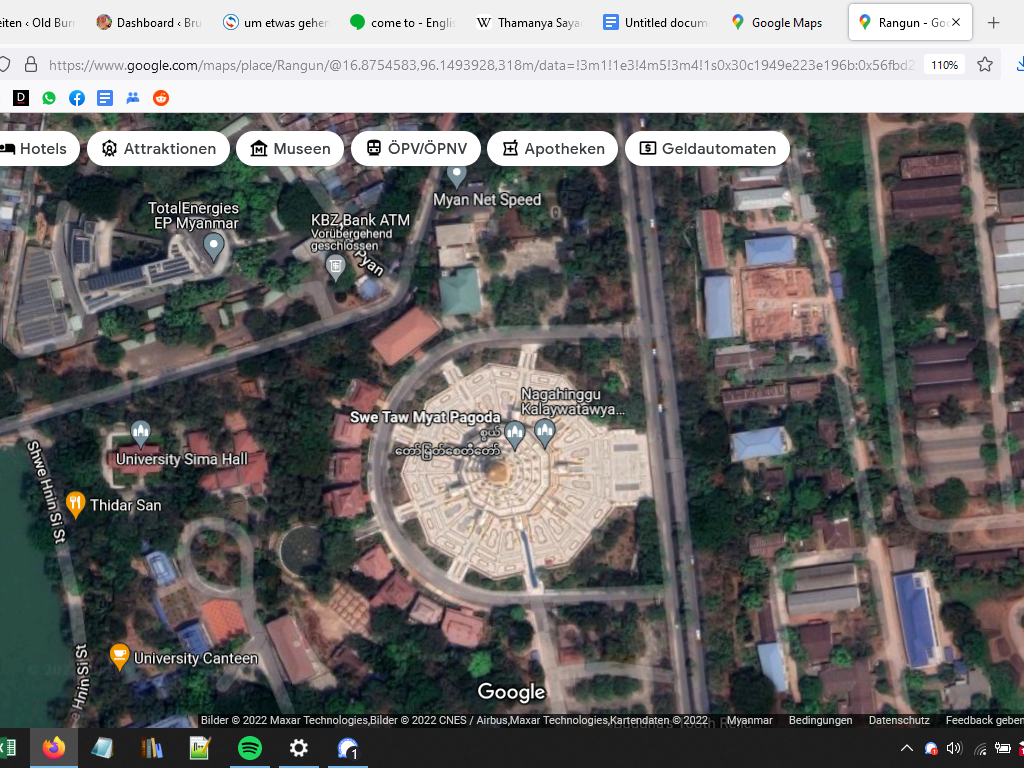
This number is of great importance in numerology worldwide and Burma is no exception from this rule. In the following, I’ll confine myself to NINE (what else?) examples.
The other day I was having lunch with my wife and noticed that she had a vegetarian meal. Which happens rarely. I asked her why and she answered: ‘Today is kou: nawin:!’ I had never heard that expression before and she told me that according to it she doesn’t eat meat every ninth day. When I looked it up in my dictionary I found that nawin: is ‘one ninth of a zodiac sign’. As I’m not well-versed in astrology that didn’t help me a lot. But maybe one of our readers can help?
Some of you might have been to the Swe Taw Myat pagoda in Mayangone town ship. This imposing structure was built in the early 1990s to accommodate a tooth relic from China in 1994 for forty-five days before it started its journey through the country. A similar one (yet smaller) was built in Mandalay. Later the relic was returned to China. If I’m not mistaken it made another trip to Myanmar later. If you believe Renown Travel Bangkok (which you shouldn’t!) it is ‘a symmetrical building with four entrance portals protruding out from the main structure’. Nothing could be farther from the truth: the pagoda has NINE entrances as the aerial photograph proves. I’ve always wondered about people who write such crap: Why don’t they simply have a look? It would be so easy! The nine entrances are dedicated to the nine attributes of the Buddha. (https://buddho.org/the-nine-qualities-of-the-buddha/). You can find their names over the resp. entrances.
Superstitious travelers in Myanmar will avoid at any cost to travel in groups of nine. This could cause the revenge of Ko Myo Shin, the Lord of the Nine Cities! He is the ruler of the traditional nine cities of the Kyaukse area and happens to be the brother-in-law of the famous nat U Min Kyaw, the patron of drinkers, gamblers and womanizers. There is a big Ko Myo Shin Shrine in my hometown of Maymyo. If you can’t avoid traveling in a group of nine passengers you’ll have to resort to a trick: take a big stone along and address him as Mr. Stone, so Ko Myo Shin might be fooled. However, if you don’t do that, you’re doomed.
Lately I wrote an article regarding the number 108. My friend Helmut Koellner added another explanation: 108 is the result of (2×2) multiplied by (3x3x3)! 2 of course stands for the dualism and 3 for the three jewels Buddha, Dhamma and Sangha. Multiplied by itself their power is enhanced double or threefold!
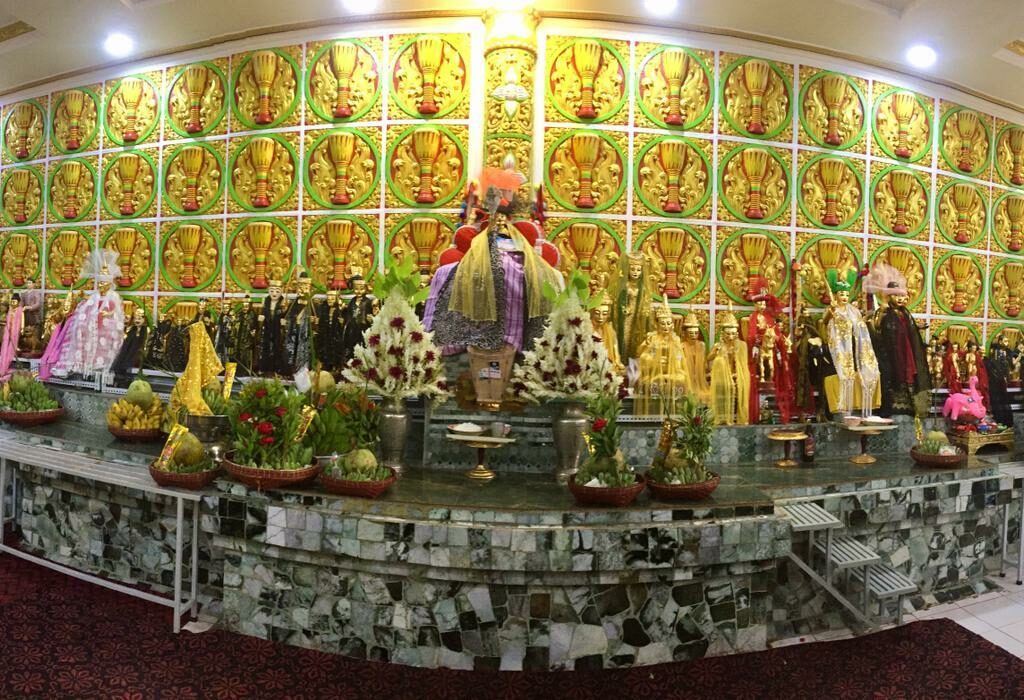
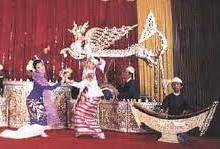
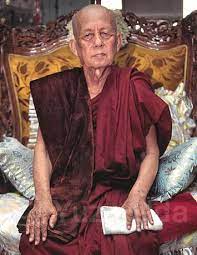
But let’s go back to number 9. In my above mentioned article I wrote that there were eight planets. Even though that is true for the believers, there exists another planet, too: its name is Ketu and he’s considered to be the king of planets. As he isn’t attached to a day of the week he’s less important for the faithful. So altogether there are nine planets! As you all know, every planetary god has his vehicle such as the lion for Mars (Tuesday) or the rat for Jupiter (Thursday). And the king of planets of course requires a special vehicle which is known as pjin saju pa. (Pali: pancha rupa = five forms, shapes) which combines the attributes of five different animals. You can find it in every Burmese orchestra, supporting the biggest drum.
I don’t share the opinion held by many people that Emma Larkin (author of ‘Secret memories – finding George Orwell in a Burmese tea shop’) is a luminary regarding Burma/Myanmar. However, in one of her books I read about nine holy men with supernatural powers, one of them being the late Thamanya Sayadaw. Some of you may remember that his corpse (he died in 2003) was stolen in 2008. Four days later his followers were informed that they could collect the holy man’s ashes. It is widely believed that this was a case of yadaya (black magic). According to popular belief the bodies of nine holy men in contemporary Myanmar contain a powerful substance (da’ do). He who can obtain all nine will be invincible. There were rumours that the military government wanted to place those things around the new capital Naypyidaw, thus ensuring that their rule will last forever. Believe it or not!
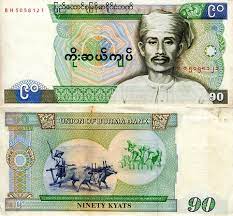


Then there is the ritual of the nine pagodas. According to Maung Htin Aung (even though his statements should be taken with a pinch of salt) it is a ritual that is performed when there is a serious sickness in a house. The master of the ceremony usually builds a miniature pagoda of banana stem and paper. The monastery is placed at the eastern end of the front room of the sick person’s house and must face due west. The audience has to face the pagoda. The emcee then sets up 9 images of the Buddha and his chief disciples (Arahats). The Buddha Gautama himself is in the center of the pagoda, while Rahula, Kodanna, Revatam Moggallana, Sariputta, Gavamapati, Ananda and Upali are placed at the cardinal points facing the Buddha. After placing the images of the Buddha and his Arahats, the emcee sets up the statues of the planetary gods. Ketu (see above) is placed in the centre, but of course behind the Buddha, the others are placed accordingly. Finally the Five Great Gods from the Hindu pantheon are placed in front: Sarasvati, the consort of Brahma, Sandi, the consort of Shiva, Paramaythwa (Shiva himself), Maha Peinne (Ganesha) and Gawramanta, an incarnation of Vishnu.
On the roof of the ‘monastery’ are nine miniature prayer flags and streamers and nine umbrellas. Nine flower pots round up the picture. For more information pls. consult Maung Htin Aung’s book ‘Folk Elements in Burmese Buddhism’.
And then of course there’s U Ne Win’s lucky number 9. As it seems, he believed in the power of the number to a degree not imaginable for Westerners. According to popular belief, the introduction of 90 and 45 Kyat banknotes (sum of the digits is 9 again) was due to this. However, so far nobody has been able to tell me what the 35-Kyat banknote was all about. Who knows more?
Then there are the 9 orifices of the human body: ears (2), eyes (2), nostrils (2), mouth (1), anus (1) and finally urethra …
Finally we have 27 Buddhas (3x3x3) that preceded the Buddha Gautama, bringing the total number to 28 – another holy number.
